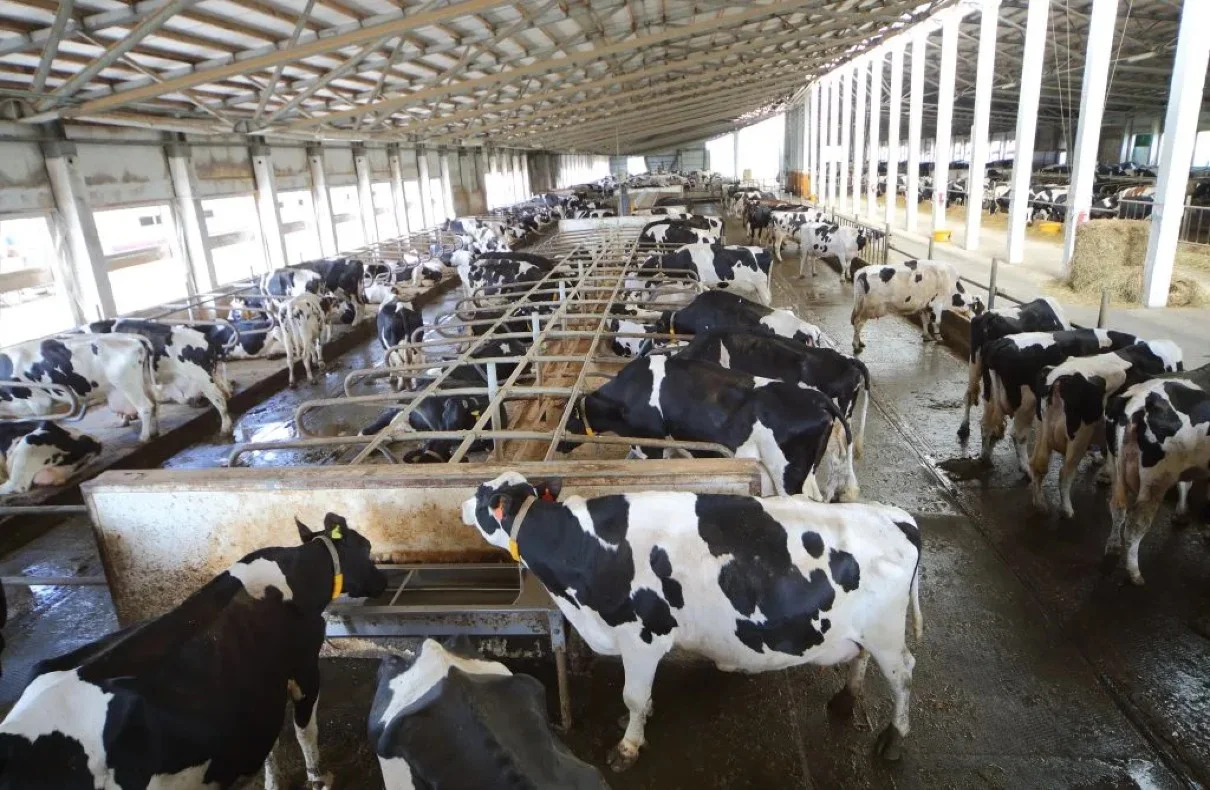In recent weeks, dairy cattle in Texas and Kansas have been found to carry the bird flu virus. This was determined after US officials – from the Texas Animal Health Commission – confirmed that the detected virus is the Type A H5N1 strain. This strain has a long history of causing outbreaks in birds and occasionally infecting humans.
The virus seems to be affecting older dairy cows in these states, as well as in New Mexico. The common symptoms among the infected livestock include decreased milk production and a lack of appetite.
This is a clear indication of illness, which led to the discovery of the bird flu outbreak. It is important to note that these symptoms are not typical in healthy dairy cows and are cause for concern.
The bird flu outbreak comes a week after a similar incident in Minnesota. Officials announced that goats on a farm, where there had been an outbreak of bird flu among poultry, were diagnosed with the virus. This is believed to be the first time bird flu, also known as highly pathogenic avian influenza, was found in U.S. livestock.
Despite these concerns, the U.S. Department of Agriculture assures the public that the commercial milk supply is safe and the risk to people is low. Dairies are required to only allow milk from healthy animals to enter the food supply. Milk from the sick animals is being diverted or destroyed.
The pasteurization process, which is mandatory for milk sold through interstate commerce, kills viruses and other bacteria, further ensuring the safety of the milk supply.
In a statement, the USDA announced, “At this stage, there is no concern about the safety of the commercial milk supply or that this circumstance poses a risk to consumer health.” This reassurance comes as a relief to consumers who rely heavily on dairy products for their nutritional needs.
Bird flu is a serious concern for both public health and the agricultural sector. It has a significant impact on poultry farms, often leading to the culling of entire flocks. Since 2022, outbreaks have affected about 82 million wild and commercial birds in the U.S.
In dairy farms, the situation appears to be different. Experts say that the livestock seem to recover on their own within seven to ten days. This is a stark contrast to the bird flu outbreaks in poultry, which necessitate the killing of flocks to get rid of the virus.
So far, it appears that about 10% of lactating dairy cows in the affected herds have been infected. This data comes from Michael Payne, a food animal veterinarian and biosecurity expert with the University of California-Davis Western Institute for Food Safety and Security.
Bird flu was detected in unpasteurized, clinical samples of milk from sick cattle collected from two dairy farms in Kansas and one in Texas. The virus was also found in a nose and throat swab from another dairy in Texas.
Officials describe the situation as rapidly evolving. The Food and Drug Administration and Centers for Disease Control and Prevention are involved in the investigations, along with officials in the three affected states. Iowa, another dairy-rich state, says it is monitoring the situation.
In response to the outbreak, dairy industry officials have initiated enhanced biosecurity efforts on U.S. farms. These include limiting the amount of traffic into and out of properties and restricting visits to employees and essential personnel only.
